“Shoot for the moon. Even if you miss, you’ll land among the stars.” – Les Brown
I believe that everybody has the potential to become a successful entrepreneur, and I set out to illustrate this for you.
I wanted to document my entire process of building, launching, and running a dropshipping business, so you can follow every decision that I made, and use my journey to fuel your own success.
In 8 weeks I built and launched my store. During those 8 weeks I made $6,666.73 in revenue.
Let me be clear, I’m no genius. I’m just an ambitious entrepreneur, like you, with a huge drive to succeed.
I was running this business in addition to my 9 to 5 job (which isn’t related to ecommerce at all), so I had to work on my online store after work, or on the weekends – just like many of you.
Even with all the obstacles in my way, I did it, and if I can, you can too.
So, follow along with my journey to find out how I chose my products, which marketing tactics worked best for me, how I made my first sale, and learn the challenges that I faced as an entrepreneur.



Finding a Niche
When I start a new business, I always like to think about what I’m going to sell first.
Even though there are amazing online tools which can help me find a profitable business idea, I usually start by brainstorming on a piece of paper.
→ Click Here to Launch Your Online Business with Shopify
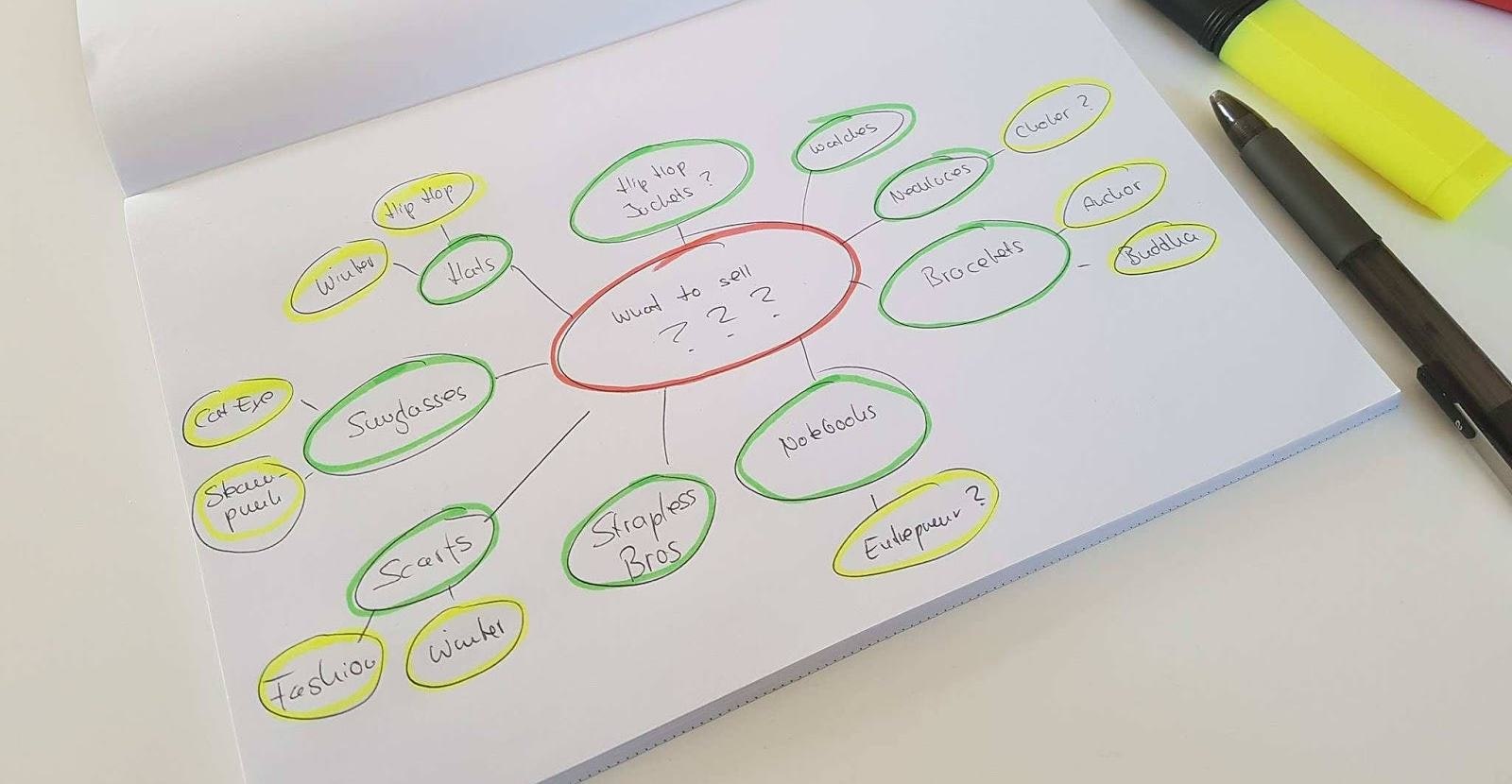
Why did I use paper? I’m a huge fan of keeping it simple, so I just wrote down everything that came to mind for 10 minutes.
I don’t want to overthink the ideation process. There were good ideas in my head, just like there are in yours, and all I had to do was put them to paper.
I used the following criteria when I was picking my products:
- No food. (I didn’t know about the quality of food from overseas)
- No electronics (easy to break which can lead to a lot of returns)
- No heavy goods (high shipping costs)
- Low-priced items (if a refund was necessary I wouldn’t lose that much money)
Now, these were just my criteria for a product. There isn’t an exact science behind this, but I’ve found success using these criteria in the past, and successful entrepreneurs double down on what works.
I came up with nine solid product ideas (as shown above in green) with some further thoughts (circled in yellow).
I already had some rough ideas for what I should sell, but I still wanted to check the bestselling lists from:
I’ve found success in the past with products that can be found in at least two of these marketplaces.
After checking these marketplaces, I settled on three product ideas.
1. Pineapple Bracelets
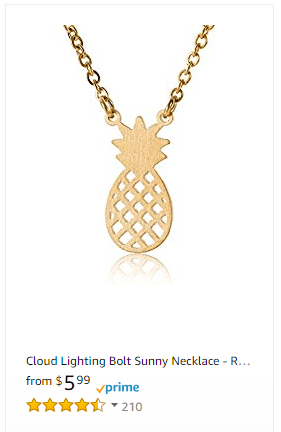
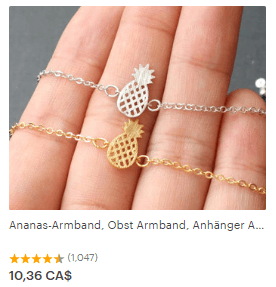
Both Amazon and Etsy had the same products in their bestselling listings, which was a good sign that there was demand for this product.
2. Steel Strap Watches
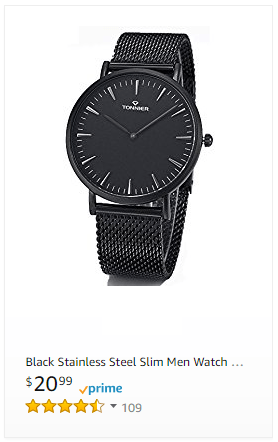
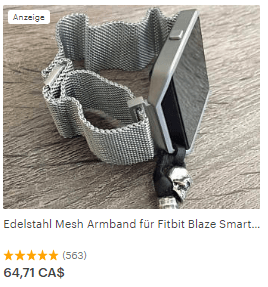
Watches with a steel strap also proved to be popular. Seemed like these products could be a good option.
3. Pineapple Hats
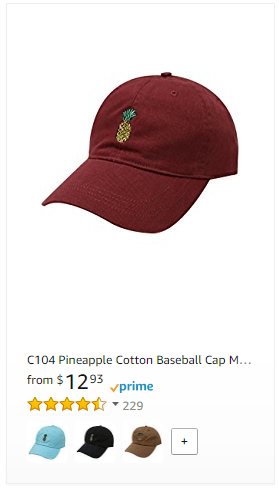
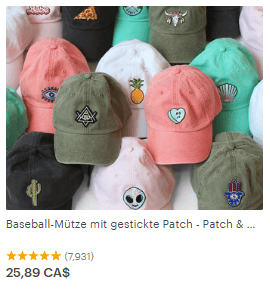
And again; both Amazon and Etsy listed similar products in their bestsellers list. I found it very interesting that both platforms had pineapple hats.
I had three ideas, so it was now time to validate them.
Niche Validation
Validation is one of the most important steps when you’re starting your own online business.
This process will allow you to understand if there is demand for your idea (product) or not.
If you skip the validation process your business can end up being a waste of both time and money.
Niche Validation #1
As I had three ideas, I had to find the one which had the most potential to become a success. The easiest way to do this was to use Google Trends.
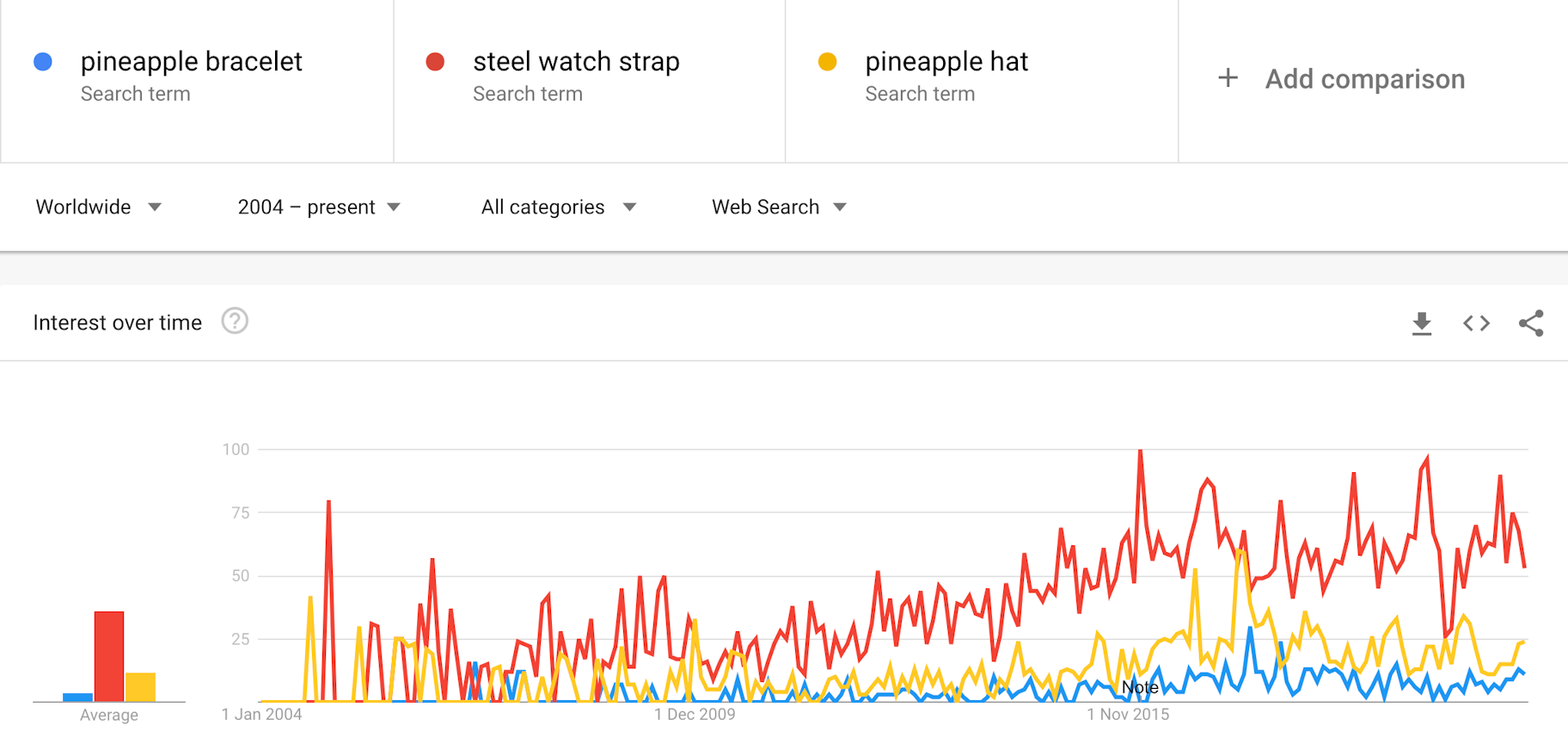
All of these product ideas seemed great. There weren’t any crazy trends, but there were definitely signs of an increasing interest across the board.
With this graph I had the confidence to continue moving forward with these product ideas.
Even though “steel watch strap” had a higher search volume on Google, my intuition told me that I should look more into the pineapple products because:
- The search volume for both pineapple products was on the rise,
- These products fall under a specific niche,
- There is a wide variety of possible products to sell.
I already mentioned that spending too much time on finding products to sell isn’t ideal for me.
Then it hit me. I thought to myself: “why not build a huge pineapple dropshipping store?”
I wanted to stick with my gut feeling, and move forward with this idea. So, it was decided: I was going to launch a pineapple store.
Finding Products to Sell
Now that I’d decided on the niche for my store, it was time to start researching some products.
I started by checking Amazon to gauge if the pineapple products were available.
I made a point to take advantage of the drop-down suggestions (as shown in the images below) after I had entered my search term.
This was a very important step. These suggestions are based on the activity from buyers who use these websites, and their algorithms have learnt which products I might be interested in.
Ultimately, these algorithms are meant to coax me into purchasing more from the platforms. And if they work for me, they’ll also work for my audience.
So, I simply searched for the term “pineapple” without pressing enter, and made a note of the results.
Amazon’s suggestions:
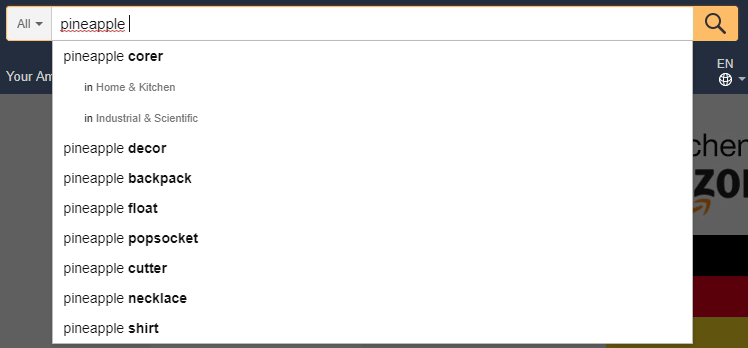
I cherrypicked these results for the products which looked most interesting and, combined with the results from my research, I compiled a list of 10 ideas:
- Pineapple corer
- Pineapple decor
- Pineapple backpack
- Pineapple float
- Pineapple popsocket
- Pineapple necklace
- Pineapple earrings
- Pineapple dress
- Pineapple bikini
- Pineapple hats
I was very happy with these results, but I still took the time to dig a little deeper and explore some more products.
After all, the more product research you do, the more likely you are to find the ideal dropshipping products for your business.
I spent around one hour reviewing these products, and I came up with a couple more solid ideas for my inventory.
I now had 17 product ideas in total. Bare in mind that each product also has dozens of different variants and color options, so my store’s inventory was looking good so far.
The Importance of Test Orders
When you’re running a dropshipping business, you won’t be handling your inventory – your suppliers will ship your products directly to your customer’s doorstep.
With this in mind, it’s always a great idea to place a test order for products that you’re thinking about selling. This will enable you to go through the entire purchasing process, just like your customers will when they place an order.
You’ll be able to review the quality of the products, the shipping times and standards, and take personalized product images yourself – it really helps you to take your store to the next level.
After I had placed a few test orders and reviewed the quality of my suppliers, I was very confident that my store had the potential to be successful.
I had found some high-quality niche products which already had a fairly high demand, and I had some good ideas for marketing campaigns.
But, I wanted to hear some honest opinions about my pineapple niche.
The best way to do this? Social media!
Social Media Validation
People love to express their feelings on social media platforms like Facebook, Twitter, and Instagram. And, by virtue of social media, they do it publicly.
I wanted to use this to my advantage, so I started to research what people were posting that was related to my product ideas.
Social Media Validation #1: Twitter
If I was to simply search for the term “pineapple” on Twitter, it’s unlikely that I would gain any actionable information.
Instead, I chose to search for some of the specific product ideas that I had marked down previously.
Here’s a snippet of the results:


After I had read through all of the relevant tweets, I had some interesting insights about what people thought about this niche and, more importantly, what my potential customers looked like.
I decided that it was necessary to get a better overview of the engagement on Twitter for these terms, so I decided to use Keyhole.co.
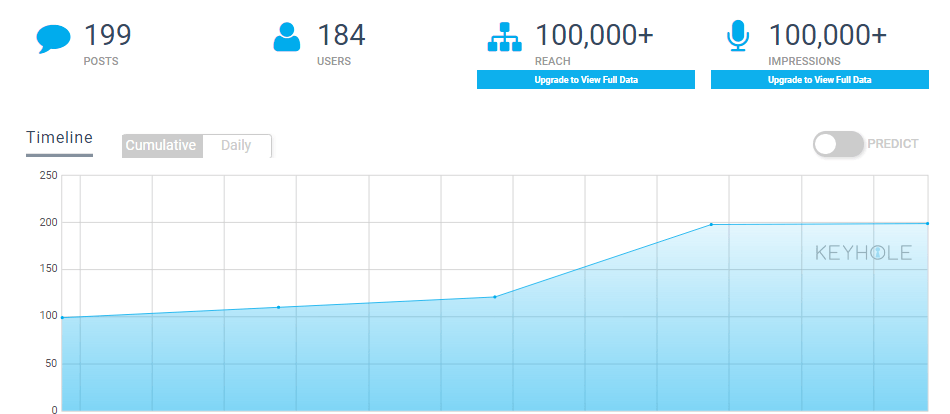
Over a period of just four days, 184 users posted 199 tweets that included the term “pineapple necklace”.
Even if we assume that 70 % of those tweets came from other ecommerce brands, that still leaves us with about 60 tweets which included the term “pineapple necklaces”.
I used the same assumptions for the other products on my list, which meant that there would be over 800 tweets about the products over the past four days.
These results looked very promising, so I decided to continue investigating these products on other channels.
Social Media Validation #2: Instagram
When it comes to ecommerce, there aren’t many social media platforms that are as influential as Instagram.
Understanding Instagram’s hashtag culture is not only key when you’re trying to grow an audience, but also when you’re analyzing engagement.
To get an idea which hashtags were the most popular I used websta.me and searched for my main keyword “Pineapple”. I was still open for new ideas and keywords, which is why I didn’t look specifically at the other keywords I found.
It turns out that there were over 7 million posts on Instagram which included pineapple-related hashtags, so there was definitely some interest on the platform.
Of those 55 most popular hashtags, 6 were product related.
As I had the high-level view, it was time to take a look at these hashtags in more detail.
My goal was to find people who had already bought some pineapple products. I wanted to see what my target audience looks like, and what kind of products they liked the most.
I took a quick look at each hashtag to find something which users had in common. The more they had in common, the easier it would be for me to narrow down my target audience.
For example, one thing I found out, after taking a look at #pineapple pants, was that the majority of young women wearing pineapple pants loved to go to the gym.
In fact, they were mostly wearing pineapple fitness leggings.
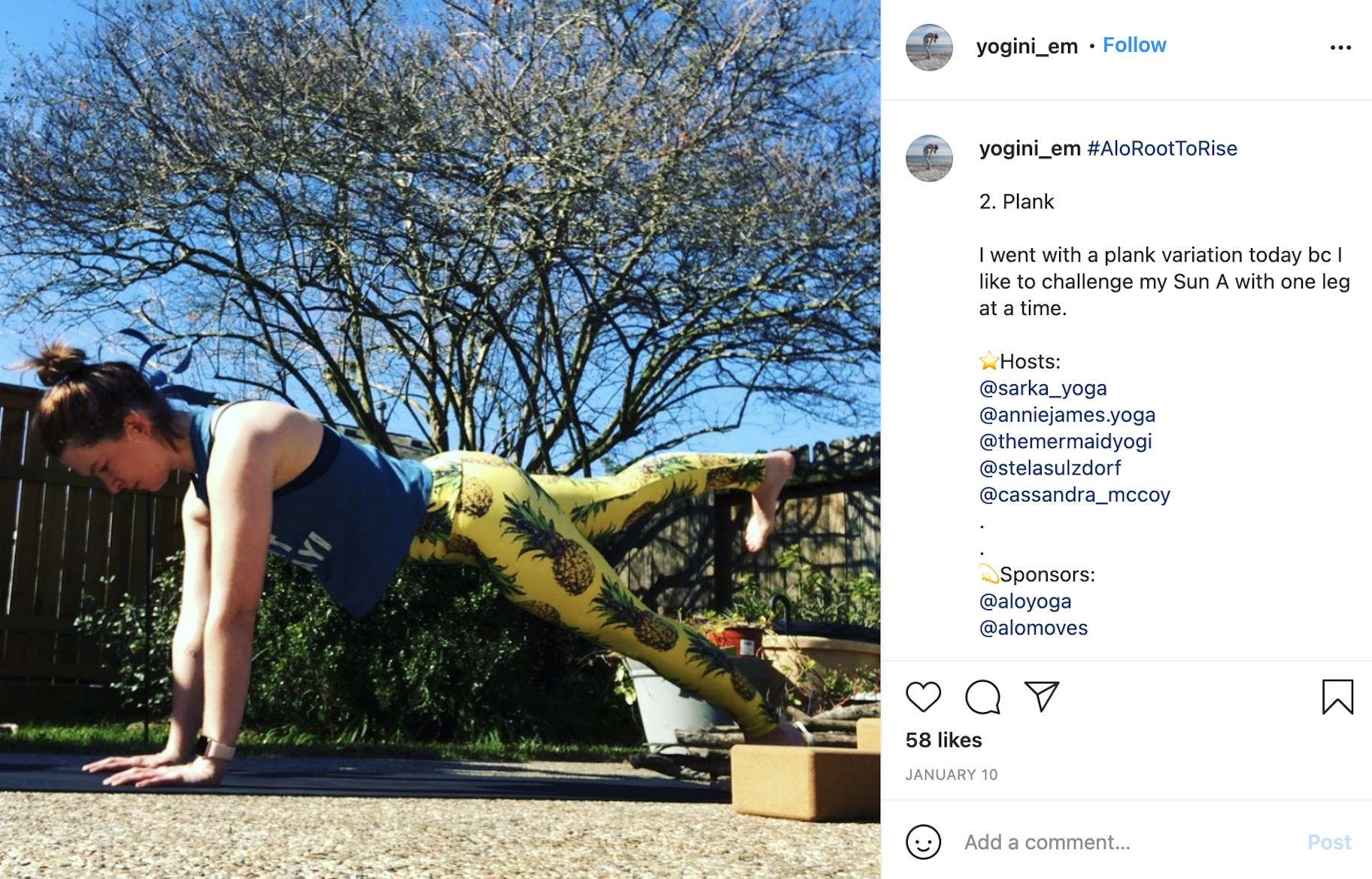
This finding was extremely valuable, as it would fuel my audiences for marketing campaigns later on.
Gathering all this valuable data is free – it’s just research. The more you know about your target audience upfront, the less time and money you’ll waste when it comes down to setting up your marketing campaigns.
Speaking of Facebook: As I was done with validating my pineapple idea on Twitter and Instagram, it was time to check the most popular social media network.
Social Media Validation #3: Facebook
Facebook is an incredible resource for gathering data.
Baring in mind that “free + shipping” business models show no sign of slowing down, my first step on Facebook was to look at the ads and posts of my potential competitors which also used this tactic.
I wanted to see how they set up their ads and how high their engagement was, so I entered “Pineapple “just pay shipping”” into the search field and Facebook found some great results.
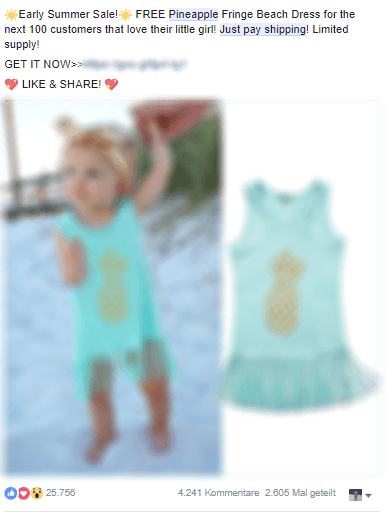
25,756 likes, 4,241 comments, and 2,605 shares.
This, along with the rest of my research, gave me some more insights into the most popular products, and my target audience.
I also searched for posts that included terms like “pineapple “order now”” or “pineapple “shop now””. The data I received was very helpful for finding winning products. I also got some new keywords which I could use to attract customers.
I was very happy with the results from my social media validation.
Twitter, Instagram, and Facebook showed me that I was on the right track with my idea. Of course, there were plenty of competitors selling similar products, but I couldn’t find any stores which fully encompassed the pineapple niche.
I had a good feeling about this one, so I moved on.
Project Management for Your Dropshipping Business
Let me be clear – building a new dropshipping business from scratch requires a lot of work.
Whether it’s product research, niche validation, or dealing with unsatisfied customers – each task is a very important piece of a larger puzzle – entrepreneurship.
If we forget one of these pieces of the puzzle, we risk our whole business.
At this point, I felt that I had researched my product ideas enough, and that it was time to finally start building my store.
I wanted to keep an eye on my progress and, more importantly, ensure that I didn’t forget any important tasks, so I used Asana, a project management tool. I highly recommend using Asana or a similar tool to set all of the tasks that you need to complete – it really helps to visualize your progress, even when you’re working on smaller tasks.
I opened a brand new Asana board and added some columns to represent each part of my business. In each column I added tasks that I knew had to be completed.
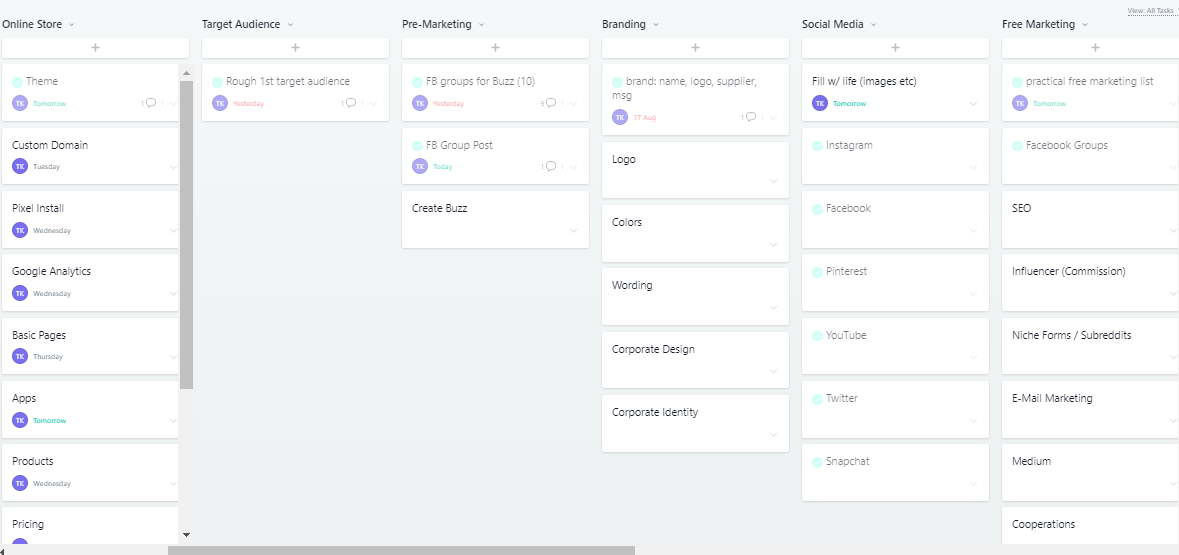
I made sure that I set deadlines for each task – I wanted to maximize my time, and ensure that I was constantly working towards making my store better.
Like I mentioned earlier, I was running this store in addition to my 9 to 5 job, so I didn’t want to waste any of my valuable free time on tasks which weren’t essential.
I also installed the Asana app onto my phone – this way I was notified whenever a deadline was coming up. This was a great idea that really helped me to stay on track with my timeline.
Once everything was set up on Asana, it was time to dive into the store build!
Coming Up With a Name and a Logo
To many entrepreneurs, the name of their business takes a long time to finalize, as does their logo – but not for me. Typically I don’t like to spend too much time on this step, and instead aim for a simple, solid, business name and logo.
I wanted to tackle the business name first. Pineapples are evident in certain Polynesian cultures, so I thought it could be a good idea to come up with a business name that had Polynesian links.
I already knew that my target audience was going to be mostly young women, so I searched on Google for Polynesian girl names.
One of the first names that I came across was “Olani”. According to Nameslist.org this is the description of the name:
“Olani have a great affection towards creativity, beauty and domestic activities of life. Olani are trustworthy, honest and behave responsibly. Olani have tendency to sacrifice their needs for others”
Worked for me.
However, you can use a business name generator if you’re struggling to come up with a good name.
Next let’s talk about design.
Now, I’m not great at it, so I was thinking about paying a graphic designer to help me create a logo for the business. However, I wanted to keep the upfront costs as low as possible for this business, so I decided to check for free alternatives instead.
I landed on Vecteezy.com, a resource for free vector art, and decided to search for a pineapple icon.
I found a nice looking fruit collection which also included a minimalist pineapple icon:
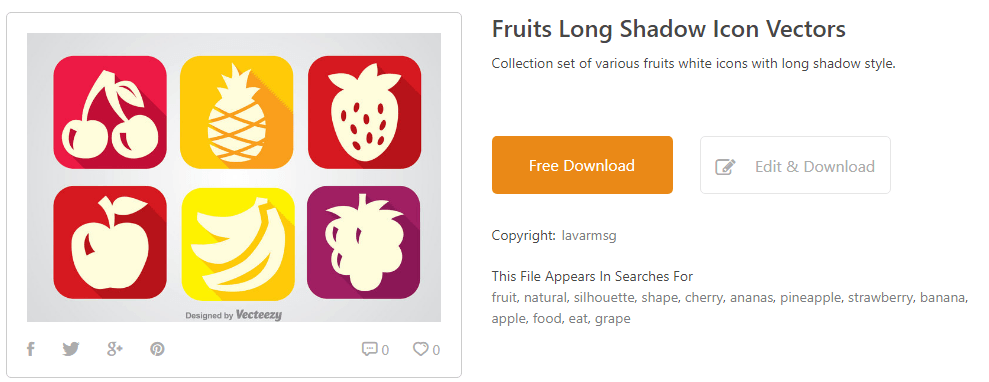
I wanted to get rid of the other fruits and make the logo itself more transparent, so I cut out all the inner parts of the pineapple in Adobe Photoshop:
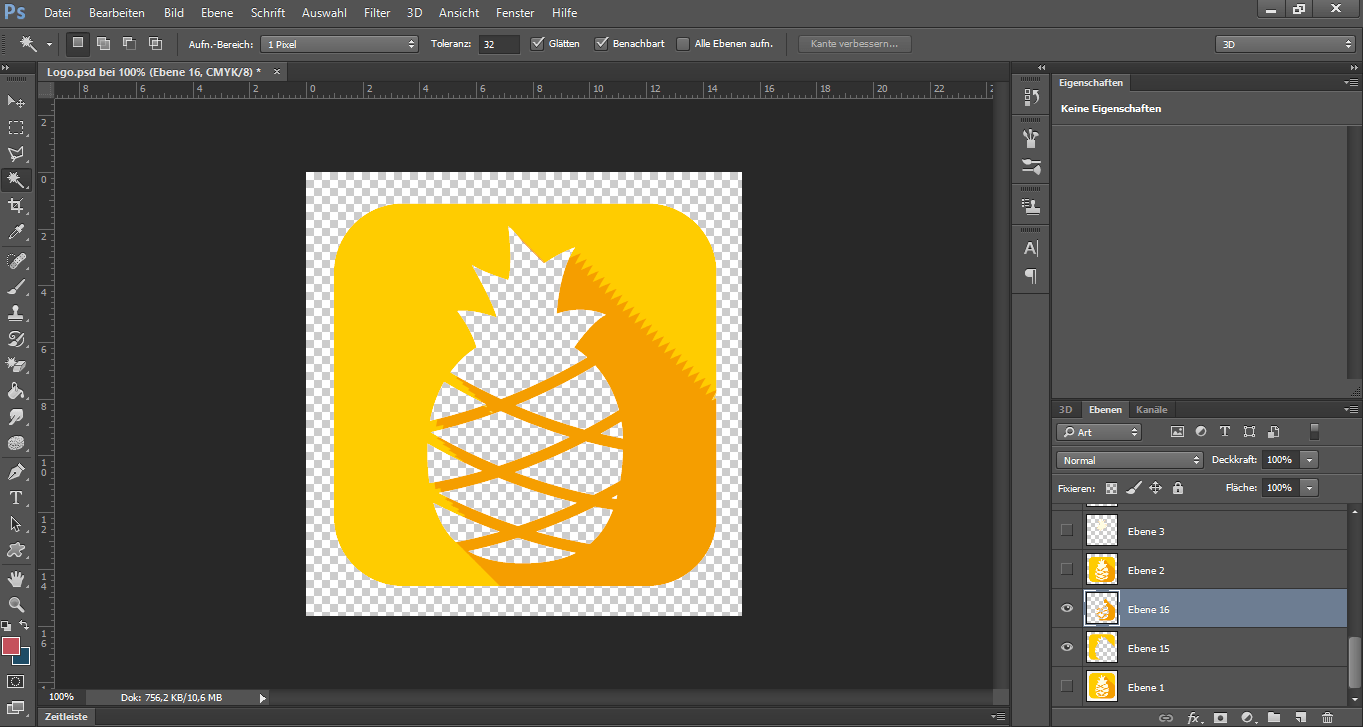
If you don’t know how to use Adobe Photoshop – no problems. We have a beginners guide on how to use Photoshop for creating and editing visuals.
And that was it. Nothing fancy, but still a nice result.
Building The Store
Shopify is the most popular ecommerce platform in the world, and it’s already trusted by entrepreneurs in every corner of the globe, so I knew it would be perfect for my store.
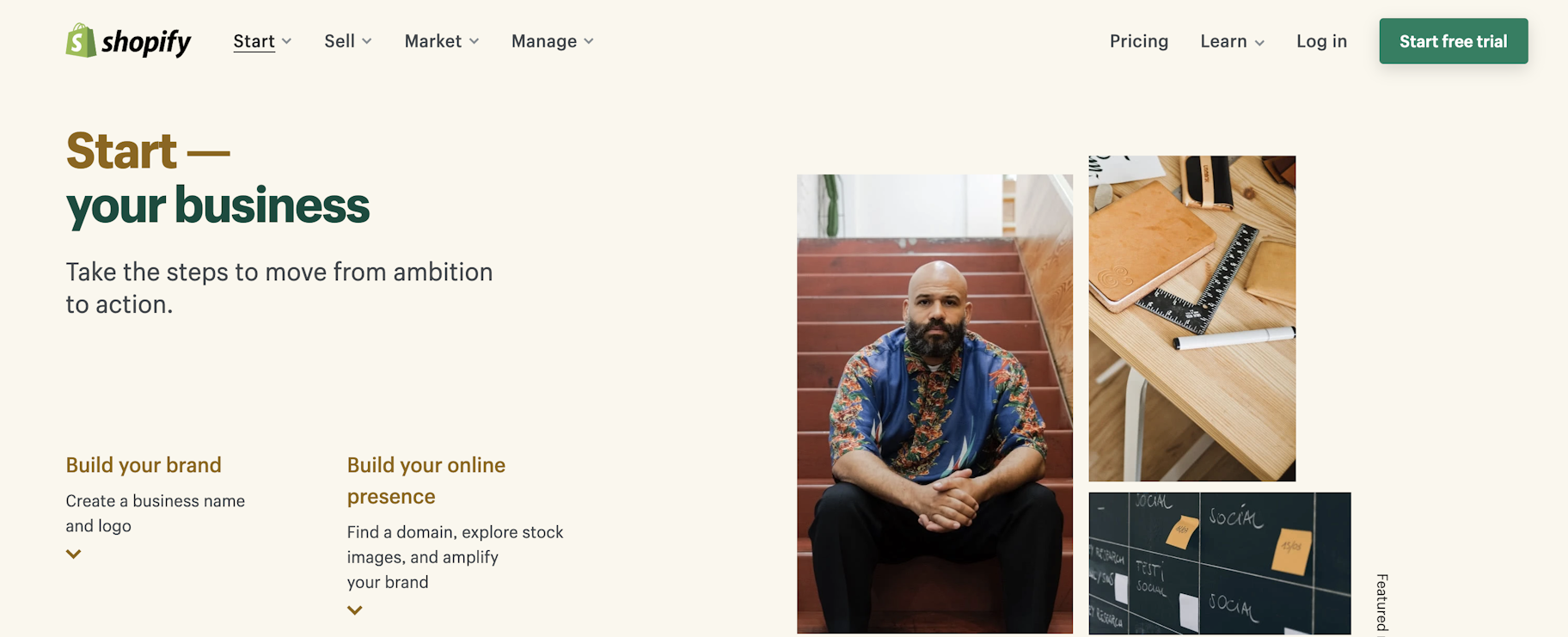
I was super excited to put my ideas into action, and get this store off the ground.
However, I had to make sure that I didn’t make the same mistake that many other entrepreneurs do when they’re getting started – fall in love with the details.
Instead, I made sure that the basics were completed first. This includes:
- “Core pages” (Contact Us, Terms of Service, Refund Policy, and Privacy Policy)
- Shipping Info (I offered free shipping, so I had to set the setting to “free shipping zone”)
- Payment Gateways (PayPal Express and Stripe)
- Google Analytics Integration
- Facebook Pixel Integration
- Buying a Custom Domain
- Installing Apps
Apps can play a huge role in your Shopify experience, so I am very picky when choosing to install them.
I only want apps that I really need.
Since I was building a dropshipping store, the first app I installed was Oberlo.
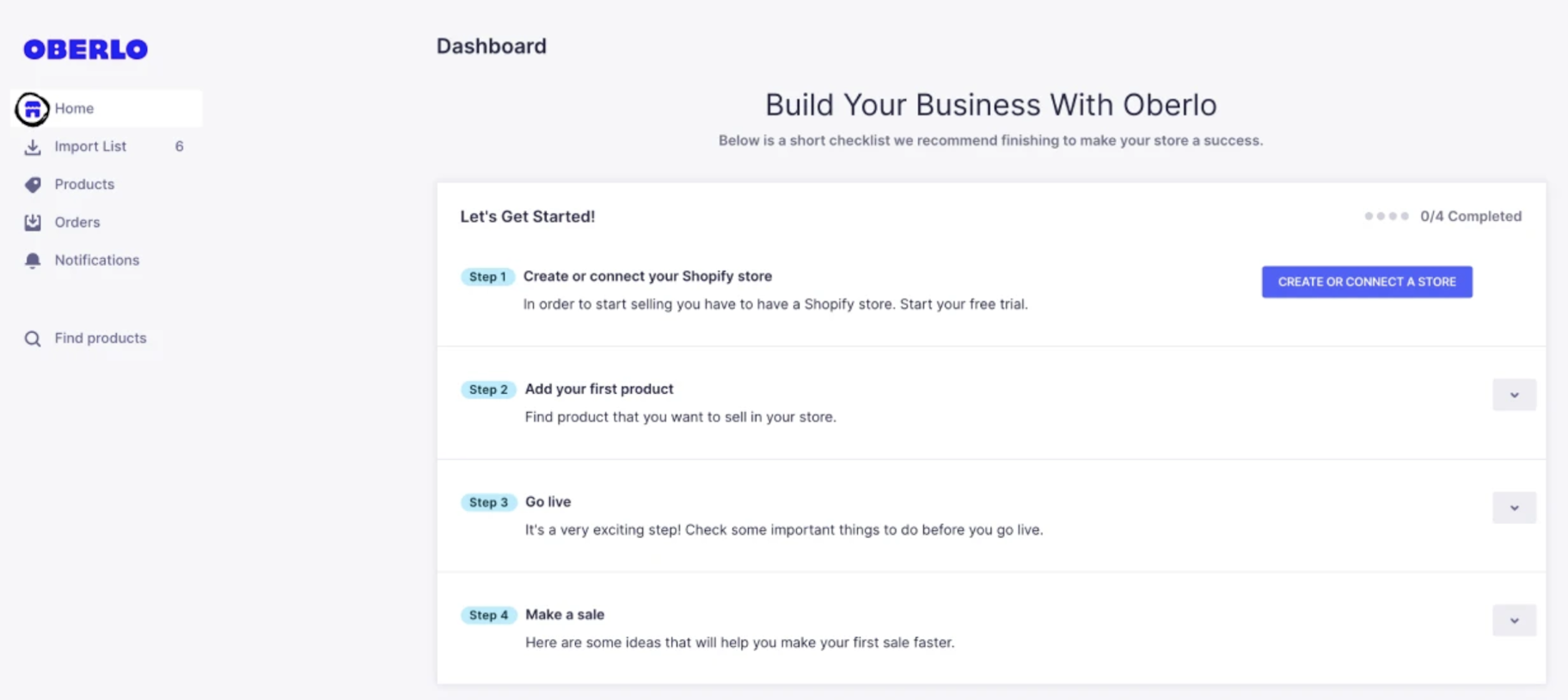
After installing a couple of other apps like Easy Contact Form and Affiliatly, I was good to go.
Importing Products With Oberlo
After I had the foundations for my store down, it was time to import products from Oberlo. There are plenty of options available, from top-performing suppliers who provide the highest quality of service to merchants over a period of time, to list their products.
I knew the keywords that I wanted to target, so I simply entered them into the search bar, and I was presented with a plethora of products to choose from.

I went through all of the available listings, chose the products which I was interested in selling, and added them to my import list.
From there, all I needed to do was push them through to my shop, and within minutes I could start making sales.
It was as simple as that.
Product Descriptions and Pricing
As I was about to launch a fashion/lifestyle store I wanted to come up with something different for the product descriptions.
A good and engaging product description can definitely affect sales. For me, at this stage of building the business, I choose to stay away from putting in too much time for the product descriptions.
I was looking for short-term success. So I came up with one to three simple lines for each product and moved on to pricing.
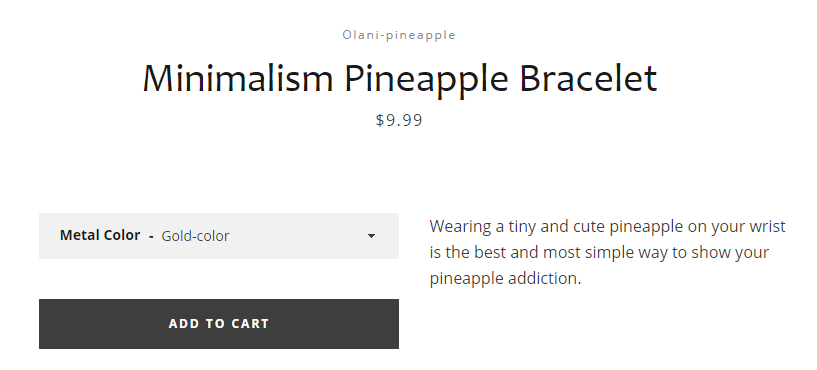
Pricing is very important and, unfortunately, often overlooked by many entrepreneurs.
If you don’t know how high your costs are, you could end up actually making a loss instead of profit.
Of course, losses were something which I really wanted to avoid, so I put together a simple spreadsheet with all the costs that I would incur whilst running my store.
Once I subtracted the total costs from the price that I would list the products at, I could easily find out what my profit per product would be.
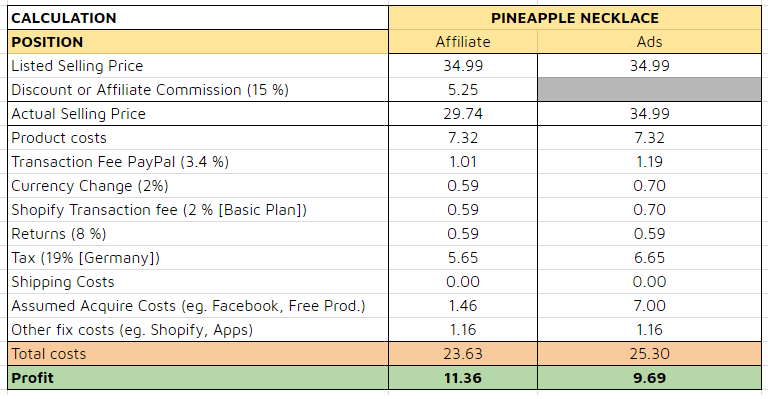
If you want to create your own calculation sheet like this, just click here.
My calculations were based on a very pessimistic scenario for acquiring customers and also on a few assumptions:
- Around 5-7% of my customers would request a refund. To give myself some space I used 8% for my calculations. Here I used the price of the product, not the price I was selling it for, as this is the actual loss I would make when it comes down to a refund.
- I would save $.059 to cover the refund costs for every sale. I wanted to keep this simple, so I offered a full refund for any customer who demanded a refund.
Another assumption is the cost of customer acquisition. As you can see on the above image, I made two calculations.
Left side: Customer acquisition via influencers/brand ambassadors.
Right side: Customer acquisition via Facebook ads.
An influencer will receive a free product in order to promote the store. I assumed that each influencer will bring in five sales – so I calculated with product costs divided by five. To give me some space to make it more attractive for the promoter and/or the customer I also added a 15 percent discount or commission rate.
With Facebook ads I assumed that each sale would cost me $ 7.00. Those $ 7.00 acquisition costs are based on past experience. This number may be different on your business.
To cover the monthly Shopify fees, I calculated with the assumption of having a minimum of 50 sales each month. Oberlo’s Explorer plan is completely free, so I didn’t need to factor that into my budget – win!
Store Design
Once I had all the basics done, I went forward with designing my store.
Let me be clear, a store doesn’t need to look perfect at the very start, but it does need to present your products clearly and provide your customers with all the necessary information they need.
Remember: the user experience can be improved later on.
Installing a Shopify Theme
Shopify’s theme store allowed me to choose a design template from a wide variety of options.
After browsing through the theme store, I fell in love with a free theme called “Narrative”.
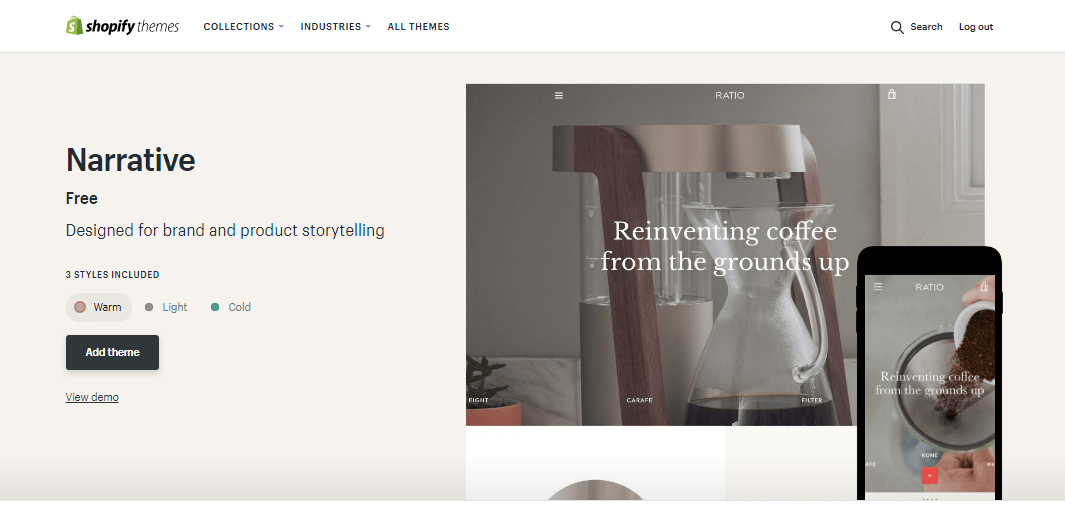
This theme had allowed me to include a large hero image, which would help my brand to leave a lasting first impression.
All I had to do was find a great hero image.
Because I couldn’t find a satisfying image for free, I went over to iStock to find a stock image that I could use.
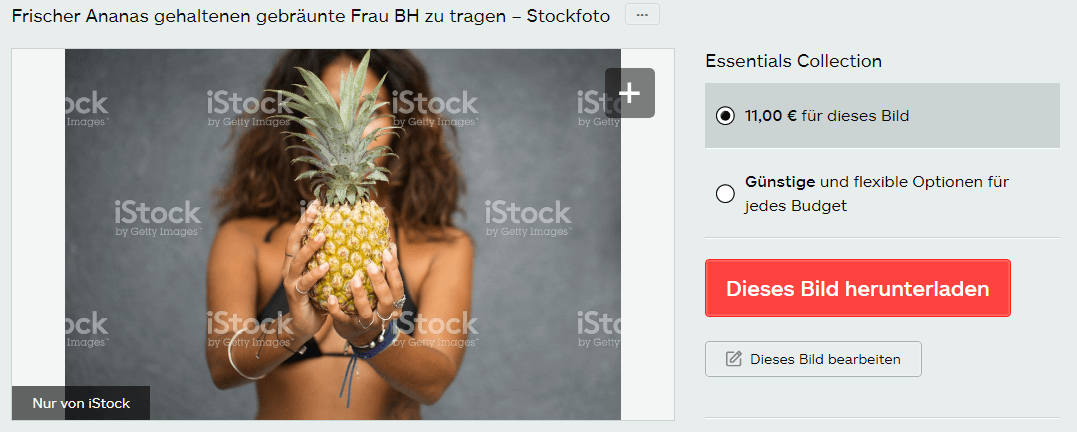
The € 11 (about $ 13) I had to spend for this image was well worth the investment.
For any other visuals I used on my store I used free images from Burst and Pixabay. These two are among the best free stock image websites on the internet, so I was sure that I’d find something worth using.
In the end, this is what my store front looked like:
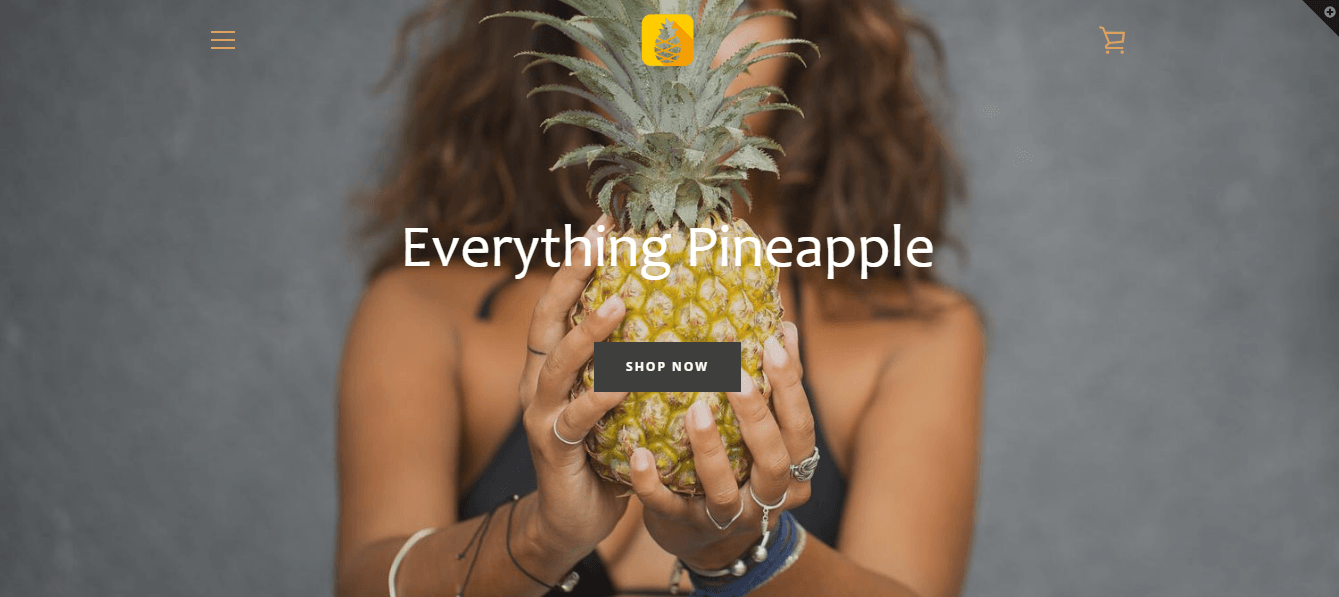
Getting Feedback
Whenever I am about to launch a new store, I ask friends and partners to give me some honest feedback on my work.
I like to ask two different “types of people”: one group who have an entrepreneurial background and another group who have absolutely no business background.
The reason I do this is to get both views: feedback from experienced entrepreneurs and also feedback from people who could be customers.
Most of the time the best advice you can take from this feedback technique lies in the middle of both sides. While entrepreneurs may think too much into details, the people with no business background tend to force themselves to find something they personally don’t like.
This time there were no major issues. I just forgot to place a favicon and I forgot to add product descriptions for two products. After I got rid of those minor problems I was ready to move forward.
Creating Social Media Business Pages
Having access to social media has changed our lives, both professionally and personally.
The opportunities which come with these platforms are incredible. With this in mind, there was absolutely no doubt about creating social media accounts for my store.
Rising entrepreneurs tend to create accounts on all major platforms out there. In my opinion, this isn’t necessary, especially when working on your own.
It will cost too much time to post relevant content and respond to each interaction with your following.
Most of the time it’s more beneficial to focus on one or two platforms in the beginning.
In order to find out which platforms could potentially bring the most value to my business I searched for the most popular social media platforms in 2021.
Facebook, Instagram, and Pinterest seemed to be the channels where my target audience resides.
This case study aims to show you how you can start your own profitable dropshipping business in just a few weeks, so I was looking for short-term wins.
I decided to focus my efforts onto Facebook, Instagram and Pinterest, created accounts on each platform, and kept moving forward.
Facebook for Ecommerce Businesses
Facebook advertising is generally the number one marketing channel for ecommerce entrepreneurs, as this tactic tends to yield a high ROI (return on investment).
However, Facebook advertising isn’t as easy as some people may think. Most successful campaigns are fueled with precise data, so the more information you have about your customers, the more likely you are to generate sales.
Collecting Data
Facebook have created a simple yet amazing tool, known as their “Facebook Pixel”, to help you collect data for your marketing campaigns.
Once you’ve launched some initial adverts, Facebook will use the pixel to scan the Facebook profiles of the users who engage with your campaigns. The Pixel will collect information on the users gender, age, interests, demographic profile, and much more to help you fine tune your advertising campaigns.
Ultimately, this helps you to target the right people with the right marketing materials.
As you can imagine, this is extremely valuable for entrepreneurs. If I wanted to gain this information too, all I had to do was install the Facebook pixel and launch some small campaigns.

I also needed to create a Facebook page for my store. Again, it didn’t need to be anything too fancy, but it needed to be a solid page that looked reputable to my customers.
If my business took off, I would then spend some more time to fine tune my Facebook page and make it something that I was truly proud of.
But for now, making sales was more important to me.
Once my Facebook page was up and running, it was time to get started with an Instagram account.
Instagram for Ecommerce Businesses
Instagram is a visual-oriented platform, so I needed some content to launch my account.
Unfortunately, I didn’t have the necessary resources. I would need to take professional photographs myself, so I needed to find another solution.
This is what entrepreneurship is all about: finding solutions to problems.
I decided that I was going to repost images from other users who had pineapple related content for now.
But, how did I gather this content?
I simply reached out to the original creators via direct message / email (if it was listed on their page) and asked for permission.
Most of them agreed, with the condition that I would credit them as the original owner – fair enough.
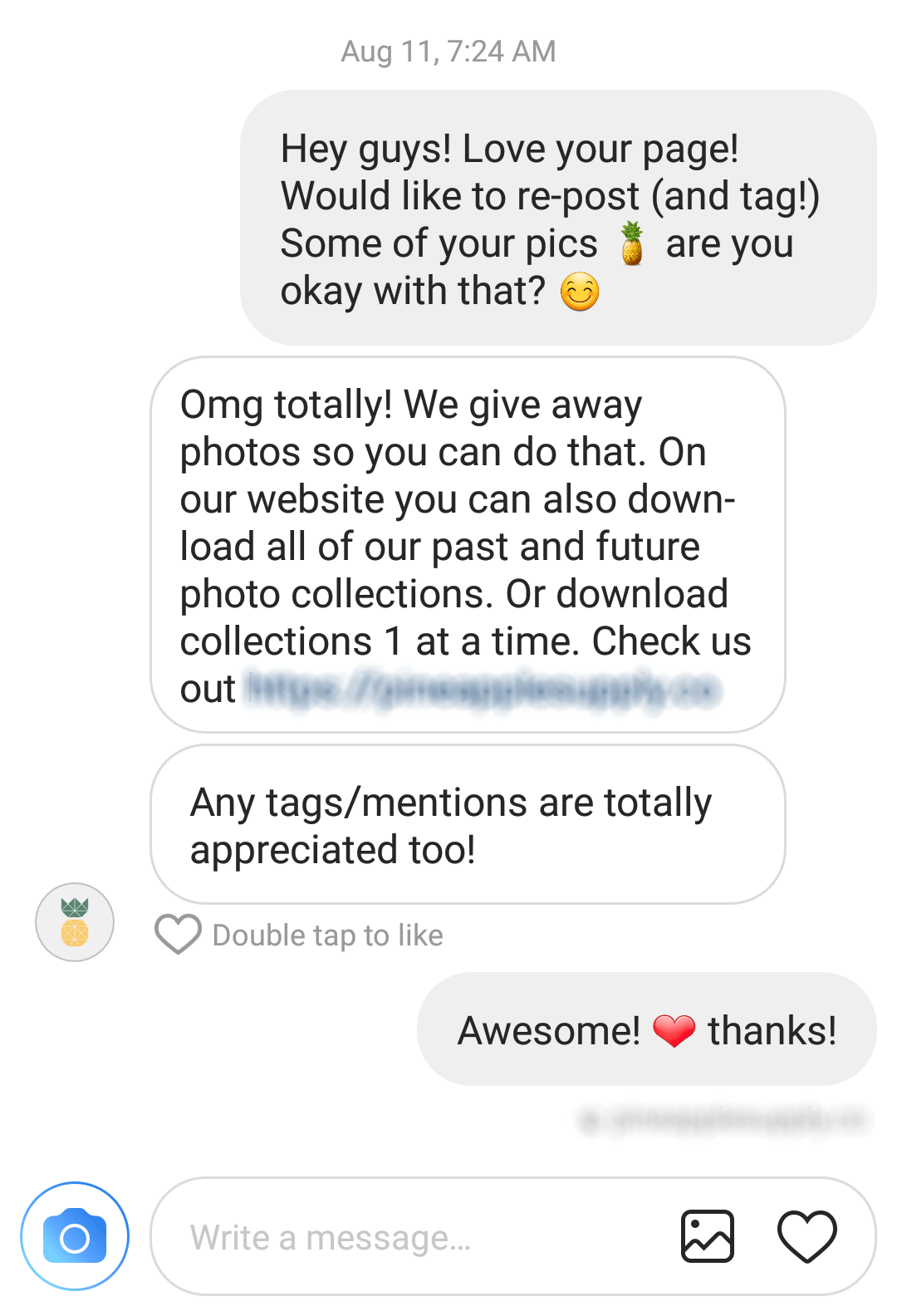
Once I had acquired 12 images for my account, I decided to post them periodically, just to establish my presence on the platform.
This adds to the social proof of the business, and it was fine for a starting point, so I decided that it was time to work on other areas.
Pinterest for Ecommerce Businesses
As Pinterest has a predominantly female audience, I expected this channel to be valuable for me and my store, as this matches my target audience.
Pinterest works more as a content curation tool, than a platform for content creators.
This was great for me as I didn’t have any unique images at this point.
All I needed to do to establish my brand was create boards and pin images which have already been uploaded to Pinterest.
In the end, I created just three simple boards with images I thought my target audience would like:

If you want to take it up a notch, be sure to check out our guide, “Pinterest Marketing in 2021: What It Is & How to Do It.”
Now that I had created these social media accounts for my business, I was ready to take the next step – marketing my store prior to launch.
First Marketing Efforts (Pre-Launch)
Instagram was my first choice for marketing, as ecommerce entrepreneurs have already found a lot of success by marketing their stores on the platform.
My initial idea was to utilize micro-influencers on the platform to promote my store prior to launch.
I would send them some free products and in return they’d share said products with their following.
But, why did I want to do this before my store was launched?
I wanted to counteract the longer shipping times that come with dropshipping, and ensure that the influencers would be ready come launch date.
Ten influencers seemed like a good start. I searched for people who fit into these requirements:
- Interested in fashion,
- Their audience aligns with my target audience,
- Minimum of 3,000 followers,
- Minimum engagement-rate 10%.
The easiest way to find these micro-influencers was to search for relevant hashtags.
I looked for people who recently uploaded an image with hashtags like #pineapplelover, #fashionaddict, #happygirl, and #selfiegirl.
I already had an idea of my target audience, so I didn’t focus solely on pineapple-related hashtags.
After one hour of searching relevant hashtags, I came up with a list of ten young female micro-influencers who were suitable for my plan.
I decided to reach out to them via direct message and let them know what I had in mind. I also sent them an image of the product that I wanted them to promote for clarity.
I would be sending them products for free, so I had to choose them carefully – I didn’t want to incur large fees here, incase it failed completely.
With this in mind, I opted to send pineapple bracelets and necklaces, as they cost less than $4 (including shipping).
Everybody agreed to create a post with the product and tag my business Instagram account, so the plan got the green light, and I sent them the products.
Remember, this can be risky. You can never really know if it’s going to work, but I decided that one risk would be okay.
After a couple of days the first influencer sent me a direct message informing me that the products had arrived, and that they loved them.
I let them know about the launch date, and when they should promote the products, and we were good to go – I was confident that this marketing tactic would set me up for success.
Launching the Store
Whenever I launch a new store I get super excited. It’s a feeling that I just can’t shake.
However, when you work to create something that you really want to succeed, there is a lot of pressure. Especially when I knew I was creating this business for this case study.
Failing was never an option.
After about two weeks of upfront work it was finally time to launch the store!
I removed the store password and went live.
From this moment on I had to compete with every online store out there selling similar products to me. And I was definitely not the first one selling these products.
It’s All About The Marketing
This is where most entrepreneurs struggle.
Finding products, building a store, and launching your social media accounts are no easy feat, but marketing is the most important part.
And selling something to a complete stranger is hard – there’s no doubt about that.
Even if you have some experience in marketing or sales, you can’t really bank on the last tactic you found success with to work for all stores. Customer behavior is constantly changing, so it’s important to run experiments and adjust your marketing.
Stagnation = Regression.
When I was launching my first few campaigns, I wanted to test a couple of things.
Even though I had already performed lots of research, I still couldn’t be certain that my marketing campaigns would work.
However, I had only spent $ 66.4 in total thus far, so spending some money on Facebook ads seemed to be okay.
Launching Some Facebook Ads
I started by setting up Facebook ads. Even though I’m not the best when it comes down to Facebook ads, I knew this simple strategy would be beneficial in order to gain some data:
- Set up some Facebook ads targeting a rough target audience,
- After at least three days optimize the ads with data, Optimize again.
I also already knew that my target audience looked like this:
- Gender: female
- Age: 19 – 29
- Interests: fitness, fashion, social media
- Liked pages: H&M
I added H&M in order to narrow the target audience at least a little bit more down. I just assumed that my future customers also like this company.
I created a simple and attention-grabbing graphic using Canva and set up my first split-test ad on Facebook.
Here’s what it looked like:

After a few days, my split test was done and the results showed me what I expected – a lot of space for improvement!
Unfortunately, I only had one ‘add to cart’ and no sales.
That’s right, no sales. But I still thought I could succeed with Facebook advertising.
I decided to continue using the same graphic, but I used the demographic data I got from the results of the first ad to narrow down the audience.
And then it was a waiting game.
But, once again, I didn’t find the results that I was looking for.
After pushing the ad even harder, I only garnered three more add to carts, and they were more expensive to acquire.
At this point, I had to make a decision. I couldn’t continue to waste money on ads which weren’t working.
Eventually I decided that it was time to come up with a different way to market my brand.
I decided to double down on Instagram, and I was sure it would work this time.
Instagram Marketing
All the influencers that I worked with were ready to promote. I messaged each of them and over a period of just a few days they all posted their images with a tag to my Instagram account.
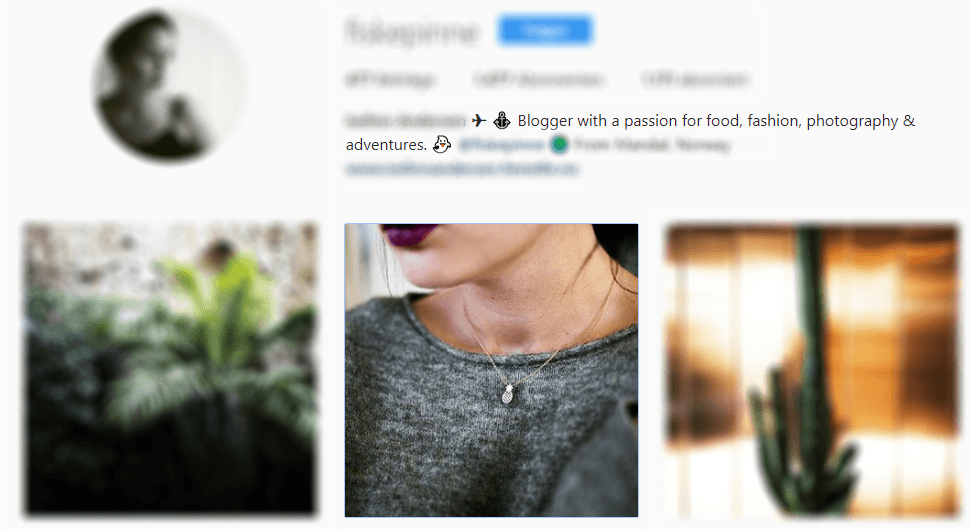
These influencers had a combined audience of more than 52,140 followers, so I was expecting to get a few sales, or at least a lot of abandoned carts, which I could try to recover using discount codes.
Unfortunately, nothing happened. 612 unique visitors but 0 sales. I failed, again.
Obviously I was doing something wrong here.
Success Starts in Your Head
As an entrepreneur, if things don’t work out, the majority of the blame goes to the person who’s trying to execute the plan.
The only person I could blame was myself.
However, I wasn’t frustrated at this point.
I knew that this is business, and these are the rules.
Unfortunately, it’s often not possible to be successful at every new project you undertake.
I accepted the loss and thought about what I could do to continue moving forward.
The question which I had to answer was simple, but the answer was difficult:
“Should I move on or switch to another niche/product?”
For me, it was never about giving up. I knew I would find success at some point. Maybe the pineapple niche wasn’t the right thing for me. Maybe I was off with the target audience.
Maybe I was overthinking the whole process.
Whatever it was, I couldn’t figure it out.
In a situation like this, you can’t really hope for help from others.
Even if you would ask them, they would tell you one of the following options:
- “Hang on! Never give up!”
- “The niche is bad, try another one!”
Both are equally right. And that’s the problem.
I was 100 % sure that the pineapple niche is a good one. No doubt about that. It just seemed this one wouldn’t work out for me.
I didn’t want to waste more money on a store that I had slowly lost hope and interest in, so I made a big decision.
That was the end of Olani Pineapple.
So, what next?
It’s time to start a new business. This time I knew it would be better.
Learn From Past Mistakes
With the next business I didn’t want to make the same mistakes again.
The first thing I did was create a list of any mistakes I thought I had made with a possible solution.
After all, I’d just lost money and time on the past business.
I also thought about the time it would take to execute these solutions along with how impactful I thought they would be.
Naturally, I opted to complete the tasks which had the highest impact first. I could complete these tasks within 40 minutes.
The goal here was to focus on the important tasks first.
I had already lost a lot of time, but this was one of the most important learning curves in this case study.
Those mistakes, the time, and the money I had lost helped me to build my new dropshipping business.
SMART Goals
I totally missed one of the most important parts when starting a new project: a goal.
When you have nothing to reach for, you won’t know how successful you are.
Using the S.M.A.R.T. formula is a simple and effective way to set a goal which is worth achieving.
Each letter of S.M.A.R.T. has it’s own meaning:
S – Specific (the goal has to be very specific)
M – Measurable (the goal has to be measurable)
A – Achievable (the goal has to be realistic)
R – Results focused (the goal has to focused on results, not efforts)
T – Time-bound (the goal has to have a date when it should be achieved)
Setting a goal which contains all the above mentioned points can be hard for someone who’s doing this for the first time. At each point you should ask yourself “does this point work with all the other points?” – the answer should always be “yes”.
And, it has to be ONE goal.
So, here’s what I came up with:
Specific:
I want to make $ 5,000 in sales with a dropshipping business I built from scratch.
Measurable:
Thankfully, Shopify lets me view the amount of revenue that I made easily.
Achievable:
$ 5,000 in sales was my goal.
Results focused:
Money isn’t always the best goal, but it’s definitely results focused.
Time bound:
I want to achieve this goal in 5 weeks.
The bottom line? I had to make $ 1000 per week.
Finding New Products
So, I had to come up with new products to sell.
Normally this is a daunting task, but I’d already completed a lot of research on possible products to sell.
And then, I remembered.
During the initial research process for the past business, I was also toying with the idea of selling stainless steel watches.
On my “mistake list” I noted that I wanted to start with a maximum of ten products. This saves time, and helps to keep things clear with the customer.
I decided that offering ten different watches in different colors should be enough.
Now, that decision might seem rash, but remember, I was very careful with the research that I had done prior, and there was no need to go through that process again.
And that was it – my next business would be a watch store.
Eyes on the Prize
With this store, I wanted to make sales from the start.
My goal was $ 5,000 in 5 weeks – not “establish a brand”. If the business will be a success, I can still try to figure out what I have to do to build a brand.
In order to keep an eye on the progress, I created another spreadsheet. This one should help me to reach my goal.

It was just a simple spreadsheet which includes my two main concerns: money and time.
So, whenever I would receive an order, I’d jump into this sheet and update the figures.
Based on the lowest price I had calculated for the watches ($ 22.49) I assumed that this will be my average order volume. Doing the math I just needed ~ 222 orders in the whole 5 week period, which equated to ~ 6 orders per day.
With this in mind, I calculated based on the lowest possible price that seemed achievable.
Building the Second Shopify Store
This time, I wanted to build a store in less than 30 minutes
I didn’t have any more time to lose.
I knew Shopify’s Burst had amazing collections of freestock images. After looking through the “popular collections”, I found a topic I liked: Urban Life.
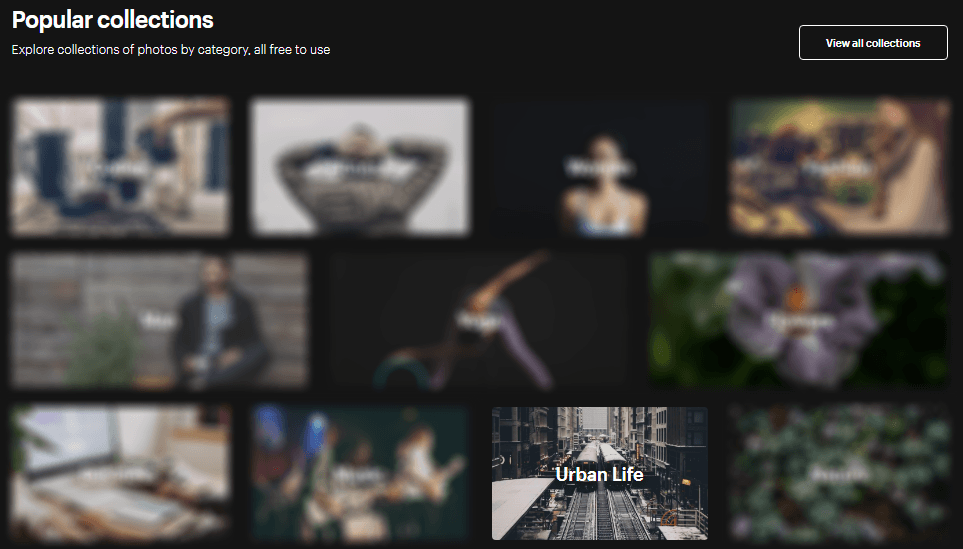
I picked three images that stuck out to me and moved on to building my Shopify store.
I actually took the same steps as on the pineapple store. I even choose the same Shopify theme (Narrative).
I came up with a simple name – “central watches” – and after about 30 minutes I was done with the complete store.
Getting Feedback From Instagram
When I wrote down the mistakes that I made with my previous store, I mentioned that I only wanted to focus on Instagram this time.
I chose Instagram because I was most comfortable with this platform, and I also knew that Instagram’s direct messages can prove to be a very powerful tool to garner early feedback on a store, and further validate a business idea.
But, it’s crucial to find real people who could be potential customers.
Sending direct messages to other business accounts or influencers didn’t make any sense here.
To find the people who I would ask feedback from, I decided to search for users who recently uploaded images with the hashtag #fashionaddict.
I chose this hashtag because I wanted to find people on Instagram who have an interest in fashion. Also, I want to stay away from a saturated hashtag like #fashion.
I sent users a direct message asking if they could give me some feedback about the design of my store.
In return I was willing to offer them a discount, free shipping, and a shout out on the Instagram page.

I like to do this for several reasons:
I involve potential customers in the process of building my business.
People like being involved with a project which is close to their interests, but one that they also feel is far from their own capabilities. It’s like a small adventure for them.
I get feedback from people who matter.
Your customer’s feedback is more valuable than store feedback from fellow entrepreneurs.
It’s the customer who has to feel comfortable browsing through your store – not another entrepreneur.
I build relationships.
Getting in contact with potential customers gives you the opportunity to build a relationship which can last a long time.
If done correctly, your customers won’t feel like “just another number”. They will feel like friends. And real friendship leads to never ending support.
You never know who you’re talking to and the opportunities which could come along with it.
I have the chance to validate my business (by making sales).
Making a sale is always the best way to validate an business. If some stranger on the internet is giving you money, you can be sure you’re on the right way.
I forced myself to be patient and wait for the replies.
The First Sale!
About seven hours after sending direct messages on Instagram, I received 12 replies – all were positive and looked like they were willing to help!
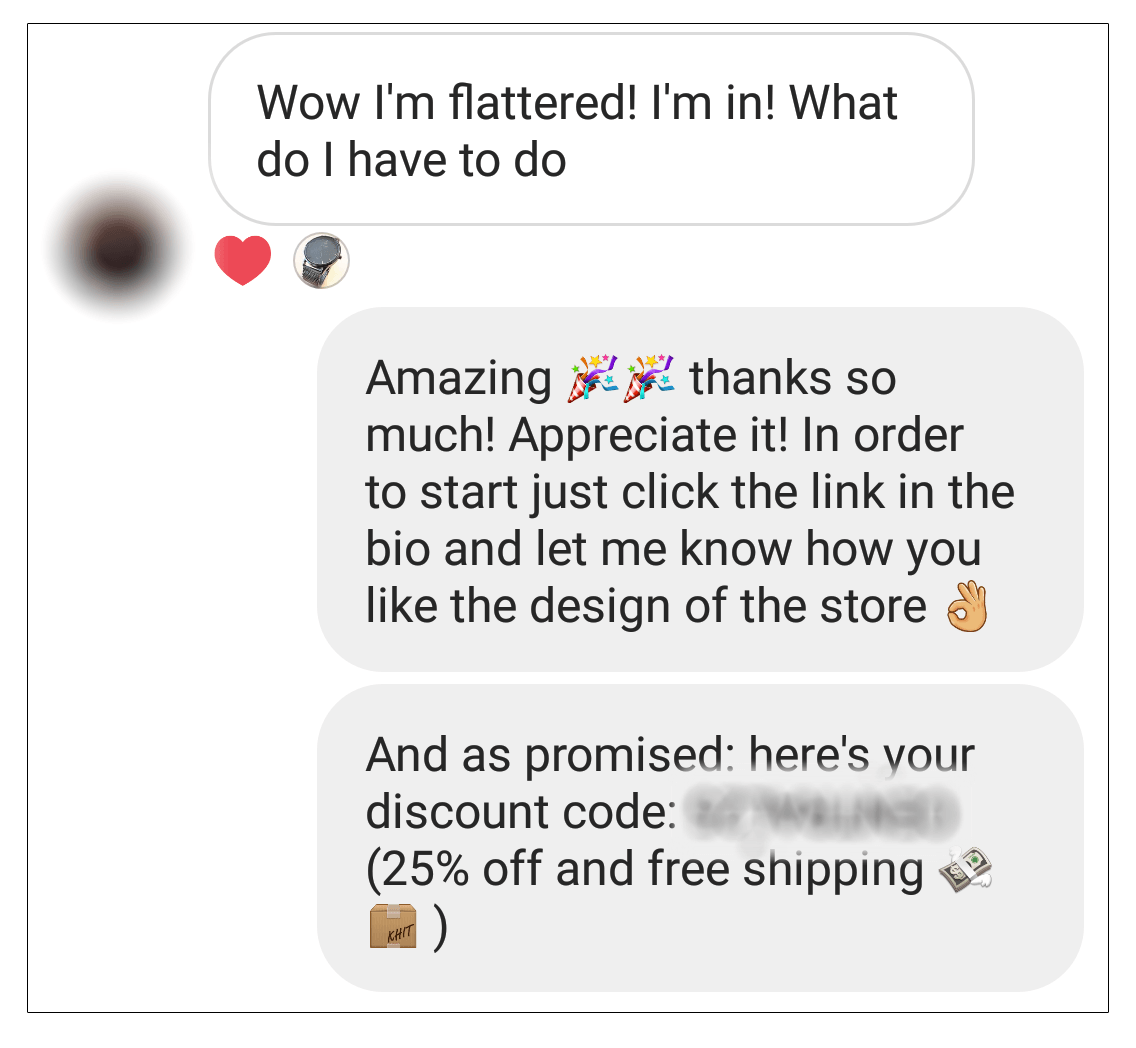
I created a discount code and replied.
A few minutes later I received something unexpected: MY FIRST SALE!
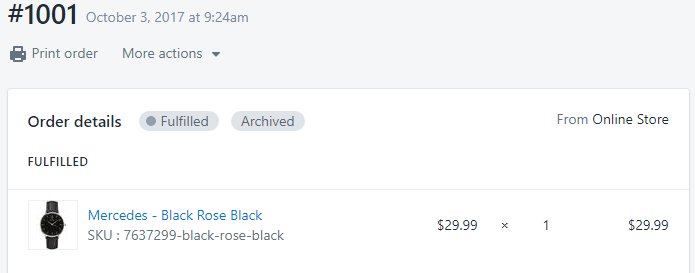
My business was off the ground.
Making the first sale is always exciting, especially if you’ve failed previously.
But this was just the beginning.
Within five days I made seven sales worth $ 166.99 in total. All from the messages I had sent on Instagram!

An amazing result – I couldn’t be more happy at this point. Now it was time to update the data in my sheet.

But even though I made some initial sales, I would never reach my $ 5,000 in 5 weeks goal with this technique.
If I maintained this growth I would have made $ 974.11 in 5 weeks. This is definitely a lot of money, but not the result I was looking for.
So, it was time to boost my business!
Boosting My Business
Growing a business without any data can be very difficult. It’s more trial and error than anything else. Some things work out while others don’t bring any results.
It was up to me to find what works best.
The best way to do this was to use all the data I had – even if there weren’t any numbers I could really rely on. I wrote down all information I had.
Products Ordered:
All seven customers ordered just three different watch variants. It seemed they all liked a similar style of watches.
Average Order Volume:
$ 23.86 – one of the customer even bought two watches.
Gender:
100 % female. Unless they bought the watches for their boyfriends/husbands this was a strong signal that my target audience is female.
Place:
Four customers came from Germany, one from the Netherlands, one from Portugal and another one for Austria. My target audience seemed to live in Europe.
Age:
As it is very hard to guess the age of my customers I made an educated guess and set their ages around 20 – 29 years of age.
Interests:
They all put a lot of work into their Instagram pages, so I assumed they all would love to be an influencer one day – traveling the world, wearing the latest fashion items, and showing how beautiful life can be.
They all showed an interest in fitness too, and posted frequently about this.
I took all of this information into account to create my “perfect customer”.
The Perfect Customer
A perfect customer is somebody who would love to buy anything from my store.
They are not just a customer, they are fanatical about my brand.
And I’m highly interested in finding such a person and doing everything I can to convert them.
As I already had seven paying customer it was easier for me to find my perfect customers than it would be if I was working from scratch.
With all the data I garnered, I created a customer profile to envision my ideal customer.
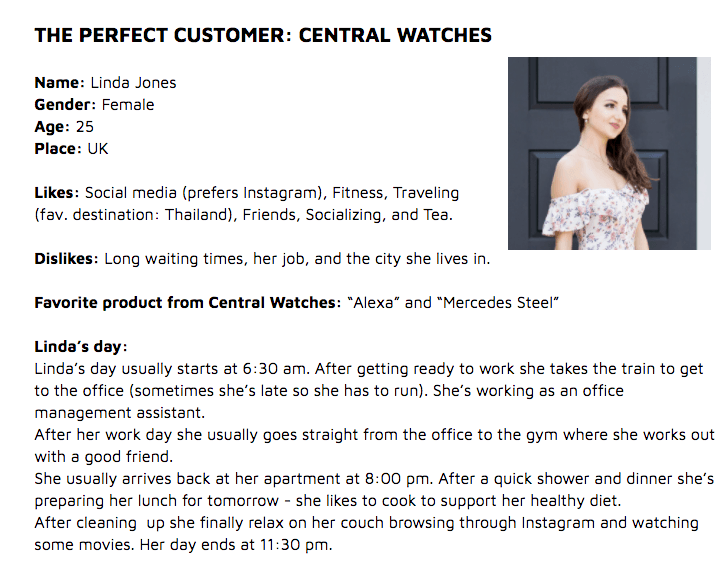
From this moment on I only had one task: find a lot of Lindas!
Because I had an idea of what my perfect customer liked, I used hashtags related to her interests.
Those hashtags were:
#gym #gymgirl #gymtime #bootyworkout #greentea #matcha #matchatea #matchalover #matchalatte #travel #travelgram #travelblogger #fernweh
Focus On What Works
I already knew that my tactic of asking for feedback worked pretty well, so I decided to try that again.
This time I sent messages to young women who had recently uploaded an image using one of the above mentioned hashtags – they could turn out to be a “perfect customer” for me.
I decided to get more focussed with this approach, so I sent 20 individual messages to people who had used one of the hashtags mentioned above.
This meant that I sent 20 messages to users who showed interest in fitness, 20 users who were interested in greentea/matcha, and 20 who posted about travel.
I did this to find out which hashtags will work the best and to narrow my target audience down more.
I spent one and a half days doing this, and I was very careful with the amount of direct messages I sent as I didn’t want to appear as though I was spamming users.
Again, the results from this tactic were amazing (all sales shown below came from those messages):

Making $ 672.49 in sales from 24 orders was the ultimate validation for my business.
18 of those 24 sales came from just one hashtag category: travel.
Within 16 days I made $ 839.48 in sales from 31 orders without spending any money on marketing.
This was a great result, but it was still too slow if I wanted to reach my goal.
I would need 74 more days at that rate, and I only had 20 left.
At this point, I needed to scale up my marketing efforts, but it’s very difficult to scale my direct messages tactic. If I took it too far, I risked getting banned from Instagram, and losing my way to generate revenue overnight.
So, I decided to stay away from direct messages. It was too risky.
And so the hunt for another effective marketing channel began.
New Ways of Acquiring Customers
I was wracking my brain trying to think about my next step.
I began thinking about what I have access to, and I was wondering how I could use my existing customers to help me succeed.
The general assumption is that, if a customer purchased a product and they liked it, they’d be happy to promote their experience to other potential customers.
So, my next tactic was to offer an affiliate marketing opportunity to them. E I would encourage my happy customers to join my brand in an affiliate program that would help them to earn money whilst promoting my brand.
I reached out to my customers again and asked if they’d like to come onboard, and five customers instantly agreed.
I installed the Shopify app “Affiliatly” and set everything up so that people who signed up to the affiliate program earned 10 % from the orders that they brought in.
All of my affiliates received a unique link to my store. As soon as a someone places an order through this unique link, the affiliate app will recognize this and will show me the amount of commissions I have to pay to the influencer. Pretty simple!
The Value of Brand Ambassadors
As I had already generated some profit from the store, I wanted to invest some of that money back into the business, to help it grow.
Since my first sales came from people who weren’t already familiar with my brand, I assumed that others would also order something from my store if a good friend recommended my store.
I already had my affiliate program set for my existing customers, who didn’t have an extremely large following on Instagram, but I wanted to go bigger.
I wanted to work with people who had a following in excess of 5,000.
So, my next step was to search for more “Lindas” who had a following higher than 5,000, and an engagement rate of at least 10%.
Again, I did the exact same steps I did before to find people who would like to work with me.
I searched on Instagram for people who recently used the hashtags #pineapplelover; #fashionaddict; #happygirl; and/or #selfiegirl.
After finding ten young women who were interested, and spending around $50 for free products and around $ 5 for express shipping, the promotion began.
Three of the influencers who joined me mentioned my business on their Instagram accounts before receiving their products, which really helped me to gain some traction.
I was very confident that I will reach my goal of $ 5,000 in 5 weeks.
I just had to find good micro-influencers who were trustworthy and had a great connection with their followers.
My idea wasn’t to promote the business directly, it was to find the right people who can do this for me.
And sometimes that’s even harder.
Amazing Results
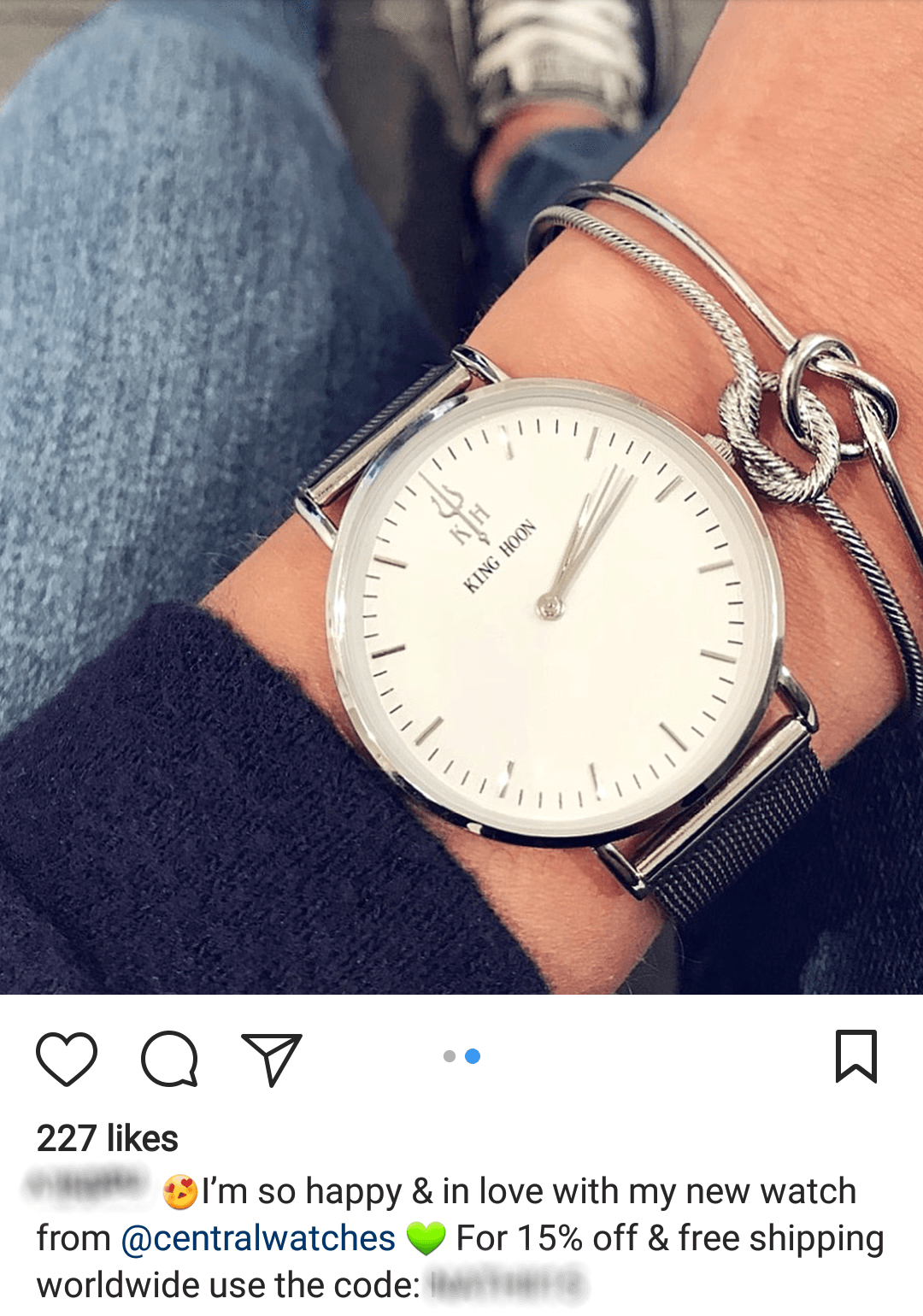
Over the next 12 days my phone kept making that beautiful “ka-ching” sound over and over again: My Shopify phone app (available for iOS and Android) notified me about each sale coming in!
At the end of the month I received 54 more orders worth $ 1783.87!

Amazing!
At the four week mark I had made $ 3,314.13 in sales from 105 orders.
Unfortunately, some of the influencers who I had onboarded didn’t perform as well as others.
If I wanted to reach my goal of $5,000, I was still too slow.
I analyzed the figures and came to the conclusion that it would take me 15 more days to reach the $5,000 mark. That’s 10 more than I had planned.
I was desperate to reach my goal, and when an entrepreneur has their back up against the wall, you’d be surprised with what they can come up with.
I rolled the dice and decided to reach out to the top performing influencers once more.
This time I asked them if they could post another picture of the watch and mention my business in their Instagram stories. I sweetened this deal by offering them another free watch in exchange.
Two of the influencers agreed and posted about my brand once more. I had a funny feeling that this wouldn’t be as effective as it was the first time. I thought that I wouldn’t be able to reach my goal.
Five days later, I was supposed to reach my goal of $ 5,000 in sales.
I checked my Oberlo dashboard and saw the following results from my latest campaign:

Another $ 689.20!
Once again, fantastic results, but I failed to reach my goal.
I wasn’t so sad about missing my goal, in fact – I was very happy with the result.
There’s a quote which describes this unique moment of not having reached the goal but still be very satisfied with what I had achieved:
“Shoot for the moon. Even if you miss, you’ll land among the stars.”
I set a goal which was high but still achievable. It actually wasn’t the amount of money I wanted to make, it was just the time I gave myself for achieving this.
I don’t see this as a failure. If I would have set the goal to “$ 5,000 in 10 weeks” I wouldn’t have needed to stretch to reach it.
I might have said to myself “keep calm, you still have plenty of time left”.
Looking at the result after the whole five weeks had passed, I was proud!
125 orders worth $ 4,003.51 in just 5 weeks!

Keep in mind that I spent just $ 270.36 (including my failed store).
And the conditions that I was working with are very similar to the conditions that many of you find yourselves in.
We’re working part time with a regular 9 to 5 job. We can’t risk too much income on the business, but we have a burning desire to succeed.
What’s the difference for me? I just put in the work. It’s really that simple.
Later I stopped all marketing efforts for this store. The business continued to make sales afterwards, and as I’m writing this my Oberlo dashboard looks like this:

195 orders worth $ 6666.73 in 54 days! And I spent less than $300 on this whole project.
Again, I must stress that this is only the beginning for this store, and it could be the start of your ecommerce legacy.
How to Continue Growing
Today’s opportunities are endless. As are the opportunities with this store!
If I would keep this store and would try to continue growing it, I would consider doing this:
Influencer Marketing
The results that I found from my campaigns with influencers were promising, so it could be worthwhile to try out some campaigns which feature paid product placement.
This is something you have to be careful about. Not all “influencers” are useful for your business. Before considering investing into this marketing technique I would highly recommend to study the engagement rate of that influencer for several days, if not weeks.
Facebook Ads
As a dropshipper, Facebook advertising can prove to be a very effective way to generate traffic to your store.
With some data for your Facebook Pixel, and knowledge about marketing, it can prove to be a huge channel for your business.
Survey Customers
Creating a short survey with Google Forms or Surveymonkey would be one of the best things to do to help us gain some more valuable information about the customers. Having a demographic profile of your “perfect customer” is great, but it’s way more valuable to know their emotional intentions when they purchase something.
You could also try using the latest Instagram feature – the poll option in Instagram stories.
Email Marketing
Email marketing is one of the most effective marketing channels out there. Remember the feedback from direct messages I sent on Instagram? Collecting emails from people who haven’t placed an order and asking them about their feedback can lead to even more sales. Unlike the direct messages tactic, email marketing is a scalable solution!
A Very Important Lesson
One of the most time-consuming things I had to deal with was customer support.
Each day I had to spend lots of time replying to customers who were asking when their products will arrive. I had a page which explained the long shipping times, but waiting more than two weeks was too long for some customers, so I had to refund some payments.
Dealing with a lot of customers can be very stressful.
As the number one reason for complaints was the long shipping time, I’d just sell to countries where ePacket is available. This might lead to less customers overall, but it makes running the business more manageable. However, you could also outsource all of your customer support efforts from freelance websites.
This whole experience was a rollercoaster, but that’s entrepreneurship for you.
I started with a store which didn’t perform at all, pivoted when the time was right, and ended up with a new store which garnered almost 200 customers.
Building a business from scratch while still working 9 to 5 is always hard. But when you accept your losses, overcome bad days, learn from past mistakes and put in the hard work it’s possible to find success!
Never give up – these words are so cliché to say but there’s so much truth in it.
Even if you fail with one, two, or three stores, you can achieve your goals!
Now it’s your turn – you have what it takes!



